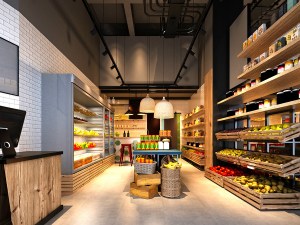What Retail Investors Want Now: A View From Transwestern
Here’s what’s driving their decisions in this difficult climate, according to Steve Williamson.

Steve Williamson, Managing Director of Retail Services & Urban Land Services, Transwestern. Image courtesy of Transwestern
In the past decade—and more intensely in the aftermath of the pandemic—the retail real estate market has been subject to several rounds of changes. Today, entertainment concepts are disrupting retail in various ways, grocery-anchored assets have become the most sought-after, and adaptive reuse and repurposing are extremely common.
Meanwhile, the high interest rate environment, rampant inflation, and increasing insurance costs and taxes continue to cause concern among retail investors, according to Transwestern Managing Director of Retail Services & Urban Land Services Steve Williamson. Despite this context, some retail investments still make sense. Here’s what Williamson told Commercial Property Executive about the trends he’s seeing today.
READ ALSO: Retail Leasing Trends to Watch in 2023 and Beyond
What types of retail deals have you been involved in lately, and what are some of the challenges you faced?
Williamson: Currently, I’m involved in transactions for large retail boxes, restaurant and commercial pad sales, and tenant representation for national retailers, including popshelf throughout North and Central Texas. In the Texas market, the biggest challenges are the lack of availability for existing well-located retail spaces and well-located retail land, as well as the higher costs of building new retail space in today’s environment coupled with higher retail rents—and the resistance you receive from retailers—which are required to make new development feasible.
Are there any trends in the retail real estate industry that you find particularly impactful?
Williamson: Omnichannel marketing will continue to be very important to retailing, but there has also been a return to brick-and-mortar now that the COVID-19 pandemic has eased and people are looking to get back out of their homes.
Besides grocery-anchored assets, what type of retail properties are the most sought-after today?
Williamson: Investors are still looking for quality triple-net, free-standing investments that are priced reasonably well.
What makes them so appealing?
Williamson: Cash-on-cash returns are important, but investors are also concerned with owning hard assets like real estate that have a reasonable chance of providing a hedge against inflation.
To what extent are entertainment concepts disrupting retail today? Are there any other concepts shaking up retail real estate?
Williamson: Experiential retail and entertainment are all the rage right now because people are no longer quarantined and want to have fun. I believe this trend will continue for the foreseeable future, and entertainment concepts will have the most success in regional, mixed-used venues.
Dollar stores and value-oriented retailers are generally performing well in today’s market due to an increasing consumer base who is intent on making their disposable income go further because of rampant inflation.
Do you expect logistic centers to overpower the retail market at some point?
Williamson: No, I do not. I believe logistics centers will continue to supplement but will not overtake or overpower the retail market.
Are there any particular U.S. areas where you see high potential when it comes to retail investments?
Williamson: Retail follows housing, so look at the markets in the U.S. where people are moving. Generally speaking, the Sun Belt states, Colorado, Utah and Virginia are seeing the most increases in new housing growth. Long term, those areas will be highly sought-after for new retail investments. That said, investors are already scrutinizing acquisitions in states where taxes are getting out of control since those high-tax states negatively impact their tenants’ occupancy costs long term, and will ultimately hurt the viability and marketability of their investments down the road.
READ ALSO: Investment Activity to Decline in 2023—CBRE
According to a recent Transwestern report, starts on new retail projects have fallen to their lowest levels in decades due to re-evaluation of post-pandemic demand. How do you anticipate this to impact retail investors in the long run?
Williamson: In states experiencing exceptional in-migration, post-pandemic demand is not the main reason for lower levels of new retail projects. What’s creating these lower starts in new retail development is more closely related to higher construction costs, higher interest rates, tighter lending practices and higher land costs, which all work together to make building new retail projects very difficult.
Generally speaking, new projects are tough to pencil in, and the lack of new retail product being built is now contributing to lower vacancy rates and higher rental rates for tenants. From an investor standpoint, purchasing existing investments that have stable tenants paying lower rental rates—but with leases that provide future upside in rents—can make a lot of sense in today’s market.
What keeps retail investors up at night?
Williamson: Easy answer: increasing rates. Interest rates, tax rates, insurance rates, vacancy rates, foreclosure rates. And then, after they are up half the night, investors finally doze off to sleep and dream of higher rental rates from their tenants.







You must be logged in to post a comment.